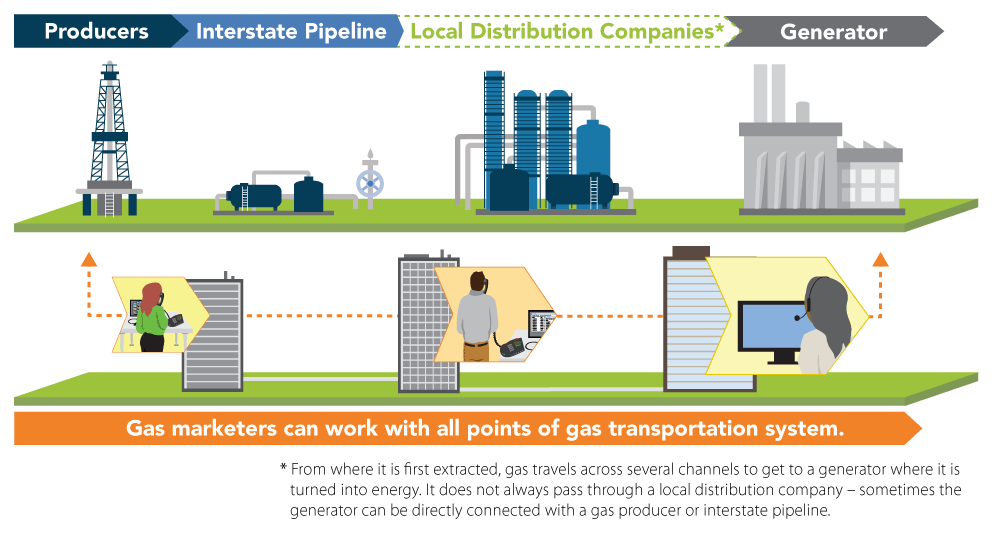The Natural Gas Supply Chain
The natural gas transportation system consists of several components that play a vital role in delivering gas to generators, who must take delivery of gas as they operate. The PJM Gas-Electric Coordination team is focused on all facets of this supply chain to assess any operational risk to the gas generation fleet within the PJM footprint.

Producers
Gas producers are companies that focus on the extraction and refinement of natural gas. Their primary focus is finding viable natural gas deposits, known as plays, and extracting gas from these sites. Once the gas is extracted, it usually must be refined to remove any impurities to produce an end product that meets transportation and distribution pipeline quality specifications. After being refined, the natural gas can be sold directly to consumers, local distribution companies or gas marketers, who are profiled below. From a generation risk standpoint, very cold winter conditions can result in supply disruptions as a result of wellhead freeze-offs in the production regions.
Interstate Pipelines
Once producers sell natural gas to a buyer, the buyer must then schedule transportation from the producer on either the interstate pipeline system or a local intrastate pipeline system. Interstate pipelines, which are regulated by FERC, move gas across a large geographic footprint through multiple states and largely resemble transmission lines in the electric industry in terms of their operation. Gas-fired generators, due to the large volumes of gas they can demand, often elect to directly connect into interstate pipelines. Interstate pipelines can affect gas deliveries to electric generation by limiting the amount of interruptible transportation on their system, which is the type of transportation service contracted by many generators. Generators that elect to procure firm gas transportation contracts are much less likely to have gas deliveries interrupted, particularly during peak gas demand periods.
Local Distribution Companies
The major customer of the interstate transportation system is the local gas distribution company or LDC. LDCs are state jurisdictional utility companies that resemble load serving entities in the electric industry and design their systems to serve smaller end-use consumers, such as residential and commercial heating, but can also serve power generation facilities. The LDC distribution system consists of smaller diameter pipelines running at lower pressures compared to the interstate pipeline network. The primary obligation of the LDC is to provide uninterrupted gas service to its firm residential human needs customers (e.g. residential customers, hospitals, nursing homes, etc.) on the coldest days of the year. Because electric generation facilities typically do not meet this criteria, a number of generators served by LDCs elect to install backup oil onsite to mitigate potential interruptions of gas service on colder, high demand days.
Gas Marketers
Many generators rely on gas marketers or asset managers to coordinate all these separate moving parts of the gas supply chain to effectuate delivery of gas to their plants. Gas marketers can work with all points of the production and transportation system on behalf of the generator, providing either the gas commodity itself, transportation or both. Many of the gas-fired generation owners in PJM use gas marketers to some degree to procure gas, making the role that gas marketers play very critical to grid operations.